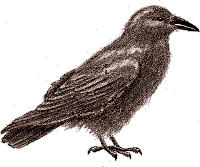Last Tuesday the Netherlands got a new king, from the House of Orange-Nassau.
So how come a Princedom in the Rhone valley and a Countship in Southern Germany become sovereigns in the Netherlands.
It all goes back to the richest man of Europe in the early 14th century, and an obscure one as well.
Willem van Duivenvoorde doesn't even have an English Wikipedia entry, was borne in 1290 as bastard of a nobleman in Holland.
He became a squire of the Count of Holland, and, being very bright, he rose to Chamberlain and Treasurer.
Willem's genius was in modern administration. He ran a large chancellery with clerics for himself who listed all his properties and he carefully analysed every opportunity for profit.
This allowed him to acquire a lot of property in the border area of the County of Holland and the Duchy of Brabant, where he also reclaimed a lot of land in a very efficient way.
Count and Duke both though he acquired these lands in lease from the other, while in reality he just took them for himself.
When the King of England started the 100 Years War against France, Willem lent him as much money as England could deliver wool to him. But when the King needed more money and offered his crown jewels, Willem refused.
Quite rightly so, because when the Florentine bankers accepted this offer, they were never repaid, and they went broke, effectively ending the power of the Florentine monetary power.
Willem had also very good relations with the Duke of Brabant, who knighted him in Brussels in 1328 and made him a Banneret, ending his bastard state, and enabling him to inherit his possessions to his relatives.
When he died he ruled over the city of Breda and large areas in the South of Holland and the North of Brabant, and he was the richest man of his time in Europe.
However, he died without legitimate children, so his brother son inherited his possessions, and through a marriage to the Count of Nassau in 1403.
This made the Counts of Nassau an important player in the internal affairs of Brabant and Holland, that had both come under the House of Burgundy.
So when William of Orange-Nassau inherited the sovereign title Prince of Orange, he was through his high title and large possessions in the Netherlands the most important local noble under Phillips II of Hapsburg, King of Spain and Sovereign of the 17 Burgundy Provinces. (Duke of Brabant, Gelre, Luxembourg, Limburg, Count of Holland, Zeeland, Artois, Hainaut, Namen, Zutphen, Lord of Groningen, Friesland, etc. etc.)

